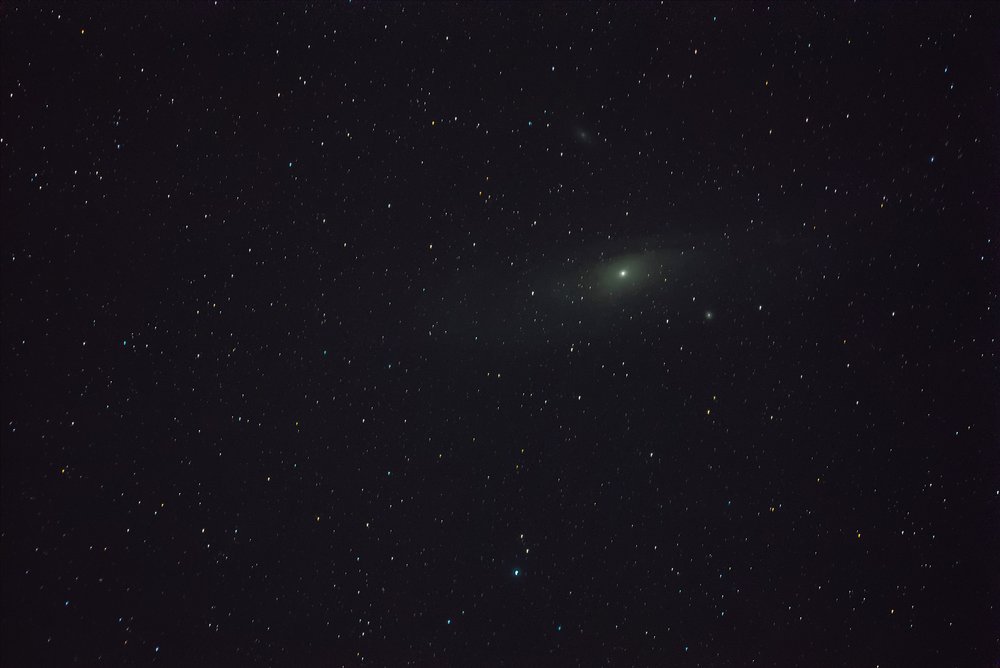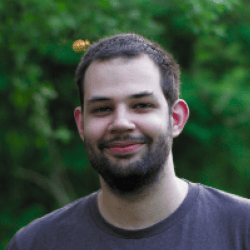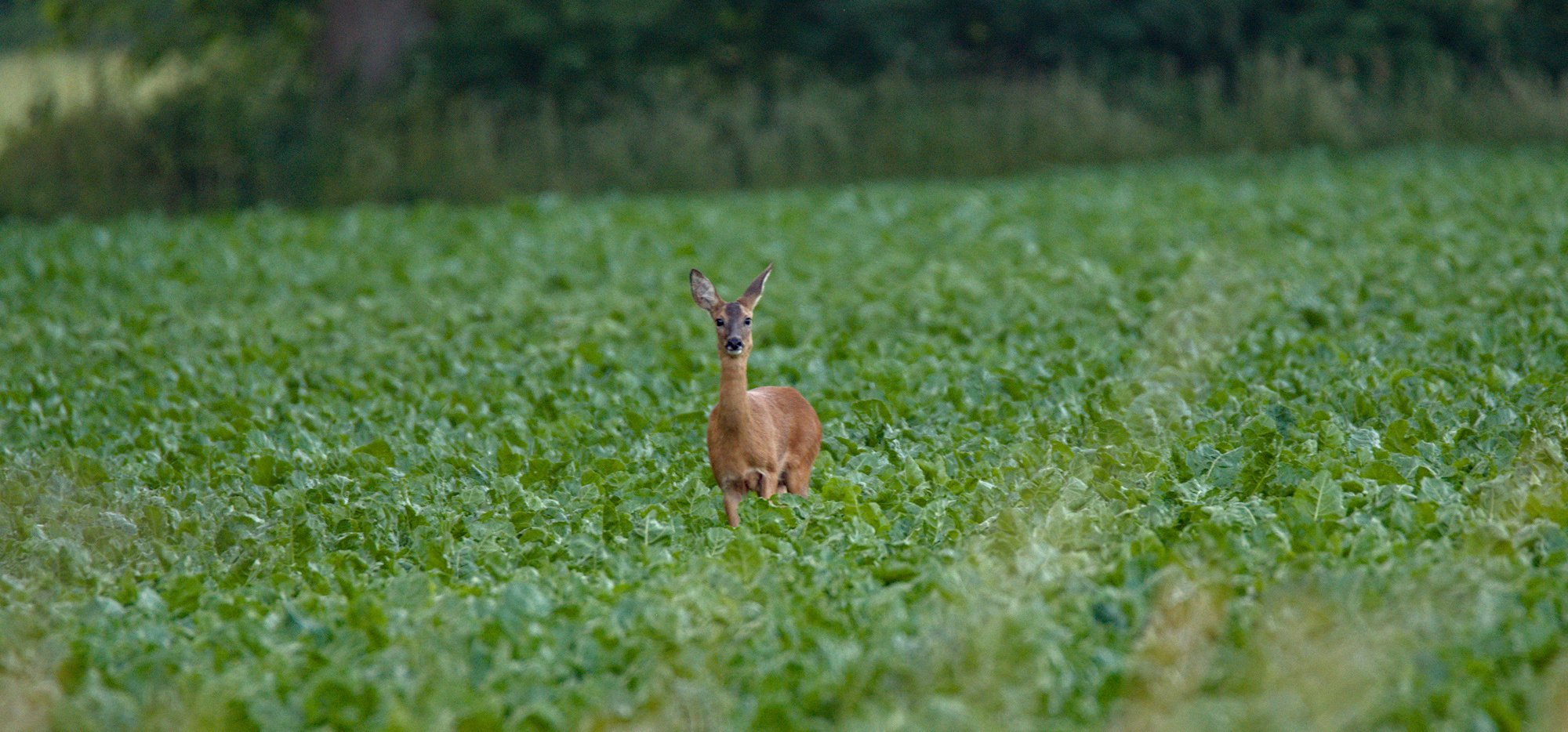It has been quite a while since I've bought a "new" camera. A lot of my photography has been done on a Nikon D3300. This is a 2014 entry-level DSLR. While this camera is marked as entry level it has practically all the features you'd ever need for photography and I never really have had any issues with picture quality of this camera.
Now the world is moving on to mirrorless cameras it has become almost affordable to buy a 10 year old second hand professional camera, so I snatched up the D750 right after Nikon introduced a new batch of Z-series mirrorless cameras. I've always wanted to use some full-frame cameras but the price difference has been absurd.
When I bought the D3300 somewhere in ~2015 If I remember correctly I did a comparison between specs of a bunch of the current Nikon cameras and came to the conclusion that getting something more expensive as the entry level just wasn't worth it. A comparison of the models at the time:
- The D3300 "entry level" for ~300 euro at the end of 2015.
- The D5300 "upper entry" for ~500 euro. This adds a tilting screen mostly.
- The D7200 "enthusiast" for ~1000 euro. Higher max ISO and faster shutter.
- The D610 "high end" for ~1500 euro. This one is the cheapest full frame model but was old-gen by that time already.
- The D750 "high end" for ~2000 euro. The same generation but full frame.
- The D810 "professional" for ~3000 euro. Takes both SD cards and Compact Flash
- The D4s "flagship" for ~6000 euro. Still only takes Compact Flash cards.
So the most obvious spec in speclistings but the least important for 99% of the work, sensor resolution. Almost all these cameras are the same 24.7 megapixels resolution except for the D810 that is slightly newer and has 36 megapixels and the D4s that is a bit older and has 16 megapixels.
A lot of specifications in webshop spec lists for these models are almost or exactly the same between these models, mainly because these are mainly based around the Expeed 4 SoC. When I chose the D3300 I was upgrading from a second hand D70 and my budget allowed only choosing between the two cheapest options. The main differentiator betwen those two models are that the screen tilts and it has a lot more autofocus points, I deemed the tilting feature completely useless on a DSLR because the main selling point for these cameras is that you have an optical viewfinder. Since I didn't need more autofocus points than the D70 I just got the cheapest one.
The D3300 is a great camera, it has significantly better noise performance than the D70 which I practically had to keep below ISO 800 to don't get super noisy results.
Looking at some benchmarks
I'm not sure if this data was available yet when I was deciding between models almost a decade back, but there is an amazing camera comparison website called DXOMARK. It has a spec comparison between the D3300 and the D750. This gives a better picture of camera differences through actual measurements of the sensor.
For some reason it's really hard or impossible to find which sensor is in which model camera which seems like an obvious spec to list since it's the most important component of the camera. Some of the major sensor differences between these two cameras:
- The old one is a DX size sensor and the D750 is an FX camera. This has some upsides and downsides I'll get at later.
- The bit depth is 12 vs 14 bit. And since since that's not super intuitive, this means it captures 4x more levels, not 1.16x the amount.
- 11 vs 51 autofocus points.
- Up to 5dB improvement in noise level at high-iso use. This is almost half the noise on max ISO.
- 12.7dB vs 14.5dB of dynamic range at the minimum ISO. This means I can have a lot brighter highlights in my shot without the sensor clipping.
After using the D750 for some weeks these differences turned out to make quite a bit of difference in which shot I could still make without things going noisy or blurry.
User experience differences
Another difference you won't easily see from spec sheets is the massive difference in UX.

On first glance the UI on the devices is pretty similar and on photos from camera reviews you'd think these behave pretty similar. It could not be more different.
The D3300 turns on the screen for practically any action you do that doesn't require looking through the viewfinder. The bottom two rows are the quick-access settings for changing some of the main behaviors of the camera like autofocus/manual focus. The exposure and focus areas and the ISO. Some of the settings can be changed with holding a combination of hardware buttons and scrolling the thumbwheel but most of the configuration happens through this UI. The way you use those software quick-settings is with the d-pad to navigate through it.
The D750 does seem to have roughly the same buttons on the back but the UI is missing the two bottom rows of settings. It's not only missing those two rows but it's actually not possible at all to change many of these settings using the d-pad and the screen. This pretty quickly forced me to learn all the hardware buttons which is probably a good thing since this is a lot faster to use.
A few examples of the usage differences:
- To change ISO on the D3300 I have to first move the camera out of the automatic modes using the mode dial on the top and then use the "i" button beside the screen to enter the actual quick settings menu. Then With the d-pad I move to the ISO option and with the "ok" button it opens a dialog to select the ISO with the d-pad buttons again. This does not allow changing between auto/manual ISO, that happens a few layers deep in the main menu.For the D750 I hold the button on the back that has "iso" above it and then I use the thumbwheel to scroll through the options. I for this action the back screen lights up quickly to show what I'm doing but there's also a tiny ISO indicator in the viewfinder to see the options while I'm scrolling through them. The list of options include "auto" so no seperate menu path is needed.
- To change between autofocus and manual focus on the D3300 there's another quick-setting menu that showing "MF" in the picture. Using the same procedure as the ISO option this can be navigated to switch between "MF", "AF-S" and "AF-C". The availability of these options is dependent on which picture mode the camera is in.On the D750 there's an actual physical toggle on the side to switch between MF and AF very quickly. There's a bunch more AF variants in this camera and also more focus point modes. These extra options can be accessed by pressing the button in the center of the toggle and using the thumbwheel the AF mode can be changed between continuous, single and auto. The second wheel on the front can change the focus point mode at the same time between single-point, all points, groups and 3d-tracking.

- Changing the shutter speed or aperture on the D3300 depends on the mode. Since there's a single thumbwheel on this camera it will pick the "main" setting on the mode you're in. On shutter-priority mode it will control the shutter and on apererture-priority mode it will control the aperture. In program or manual mode the wheel controls the shutter speed. To access the aperture setting the exposure compensation button has to be held downOn the D750 there's two wheels so the rear one is always shutter speed and the front one is always aperture control.
- To change between release modes like single-photo, burst, timer and quiet mode the D3300 has the release mode button below the d-pad that pops up another menu to navigate.The D750 has a second ring below the mode selector dial that you can rotate to select these modes between Single, Continuous low-speed, Continuous high-speed, Quiet, Quiet-continuous, Timer and mirror-lock-up.

- The mode dial on the D750 has more "professional" options than the D3300. The D3300 mode dial is filled with magic useless modes like portrait, sport, landscape, baby?, macro and night-mode. These options are basically very slight variations on the auto program. It also has a dedicated position to open the in-camera manual for some reason.The D750 mode dial has all the special-auto modes under a single "scene" position so you can easily skip them and it adds the U1 and U2 positions instead. These are fully programmable positions that store the entire camera configuration. I have one of these programmed for focus trapping and one fixed ISO 100 and 1/160 shutter. Another small detail is that the mode dial has a locking button that prevents accidentally changing the mode.
There is a lot more of these differences, practically all the settings you'd ever need are accessible using some button combination and the wheels and you can see the settings you're adjusting through the viewfinder to never lose sight of the subject of the picture. Some of these settings are especially nicely done and I really like how it spells out "3D" using the focus points when selecting the 3D focus tracking mode.

Another difference isn't the added physical buttons but there's a whole second display, I was used to having this display on the D70 but the smaller entry cameras are sadly missing this.

This top display is an old-school LCD with an optional backlight that can be triggered to read it in the dark. This picture shows basically all the settings you can read on this display but one of the nice features is that this is an always-on display. When the camera is off the amount of remaining shots is still visible (which is the 1.2k above) and when the SD card is removed it shows [-E-] instead. This makes it really quick to see if the camera is ready while it's still in my case.
Using the camera
There's quite a bit of things I noticed while using this camera the first few days. One of the first things that was obvious is how much better the autofocus system on this camera is. Not only is there a bit more granularity with the extra autofocus points the lenses also get focus a lot quicker.
On the D3300 I mainly kept the camera in single-point single-push focus mode when possible because it relatively often picks a completely wrong autofocus point in the full-sensor mode. I also barely use the continuous focus modes because it does not super reliably pick the right moments to keep focussing and stopping it again when reframing shots.
Another point where the D3300 focus is lacking quite a bit is subjects that are moving quickly. The 3d tracking autofocus on the D750 can actually keep up with a puppy charging towards you at full speed.
Another big change is mainly due to switching to a much larger sensor. This changes the lens selection I use quite a bit. Since I've never planned to get a full-frame camera I never considered that as an option while buying lenses. My most used primes on the D3300 are the Nikor 35mm and 50mm and of those I mainly use the 50mm one. Due to the smaller sensor on the old camera it means that most of my photos are effectively shot on 75mm.
At first using the lenses was quite weird. The 50mm lens on the D750 was behaving more like the 35mm lens on the D3300 which would have a 52mm effective focal length in that setup. But when putting the 35mm lens on the D750 I got... also 52mm. This is because my 50mm prime is a full frame lens and the 35mm one is a DX lens. The D750 detects this and automatically crops down the pictures in this case.
This annoyed me for quite a bit and I considered getting a new prime in the 75-85mm range to get back my favorite focal length but then I realized that I could just use my 70-300mm telephoto lens as my "standard'" lens instead. While this would be quite unwieldy to use on the D3300 it works great on daily use of the D750 and since this is a lens with optical stabilization it helps even more with low light usage.
I'm also quite happy that my most expensive lens, the 150-600mm happened to also be a full-frame lens. Dragging both the camera and this lens around is quite heavy but the results are amazing. With the improved autofocus it becomes possible to snap pictures of birds in flight even!

The lower effective focal length using the FX sensor on the lenses, combined with a lower noise floor has helped a massive amount with getting a lot of pictures successfully I would've never even attempted on the D3300 because I would have to push the ISO so high the results become useless or I would not be able to focus quickly and accurately enough to get the shot.
Astrophotography
I find astrophotography interesting, it's incredible what you're able to see using a camera pointed at the sky that you could never see with the naked eye. While I find it interesting I never gotten into it enough to actually pick gear specifically for astrophotography qualities. A few days ago I tried the D750 for astrophotography for the first time and the results have blown me away.
One difference here is that the D3300 has a pentamirror and the D750 has a pentaprism. This is a part that sits between the lens and the eyepiece of the camera and is responsible for reflecting the image through the lens a few times so it lines up with your eye while looking through the eyepiece and the picture isn't mirrored.
The pentamirror is the cheaper option which consists of a few mirrors glued together. This means that the light has to go through a few more glass to air transitions before it reaches your eyes which results in the image through the viewfinder being slightly darker. I had not noticed any difference really when using the D750 for normal photography but for astrophotography it made seeing stars through the viewfinder a lot easier.
Another difference is that on the D750 the autofocus system is actually good enough to autofocus on stars which makes the whole process a lot less painful.
And finally due to better low-light performance I was able to get way better results than my previous tries with the D3300.

Here's an example of a stack of 30 pictures with an ISO of 12800 showing the Andromeda Galaxy. I would put a D3300 picture for comparison here but at this focal length and shutter duration it just doesn't get enough light to extract the data from.
Conclusion
I'm glad I've picked up this camera. I've long thought the pro cameras were just a few thousands of euro added price to get a second SD slot and a few more hardware buttons. The reviews of these cameras seems like a lot of cork sniffing but if you compare the entry and pro cameras there's actually some significant improvements. A lot of these improvements also are most likely artifical market segmentation since this has the same CPU in both models and a lot of user experience are just missing software features.
There's some things that are suprisingly similar. One example is the video recording feature. The recording quality is practically the same on both cameras and the experience with anything relating to the live view is equaly horrible. These cameras are not for recording video. This also makes the tilting screen a useless feature.
For most pictures the D3300 is absolutely fine and as bonus it's also a lot lighter and smaller.

